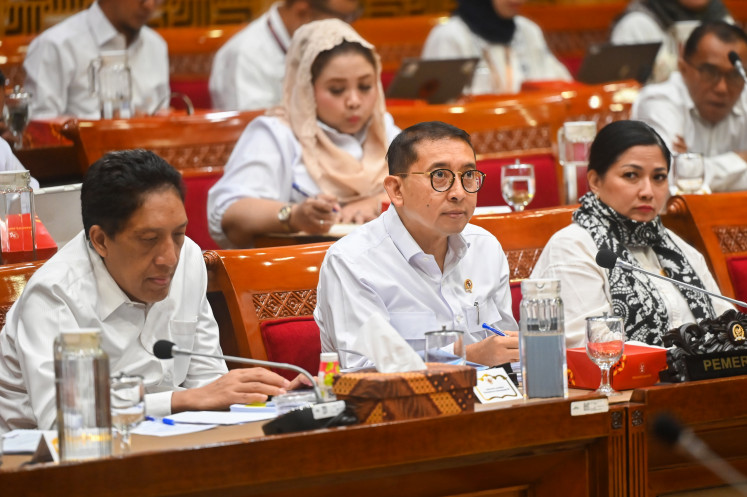Popular Reads
Top Results
Can't find what you're looking for?
View all search resultsPopular Reads
Top Results
Can't find what you're looking for?
View all search resultsMerapi evacuees return to a wasteland
After more than a month of living at makeshift shelters, thousands of victims of the Mt
Change text size
Gift Premium Articles
to Anyone
A
fter more than a month of living at makeshift shelters, thousands of victims of the Mt. Merapi eruptions started to return home to their devastated houses and villages on Saturday.
They decided to go home after the Volcanic Technology Development and Research Agency lowered Merapi’s alert status as of Friday evening.
However, many returned home briefly on Saturday to survey the damage and to clean, planning to return home permanently on Sunday.
Residents whose houses were completely destroyed by the eruptions were forced to remain at the shelters. They too checked up on the condition of their houses, and searched for any valuables.
“I went home on Friday evening upon hearing that the alert status of Merapi had been lowered,” said Sri Agung, a resident of Pagerjurang in Kepuharjo, Sleman.
Agung said the announcement had convinced him it was finally safe to return home after a month of eruptions that killed more than 300 people.
Agung, who fled his house to a refugee camp in Kalasan, Sleman, said he could not stay any longer at the camp because the government did not supply his daily needs.
“Since the start of the evacuation, I have been forced to look for supplies by myself,” he said.
Darto, a villager from Sleman, 7 kilometers from the peak of Mt. Merapi, said he had returned home before the alert status had been lowered.
“Who else would have repaired my house and food stall?” asked Darto, who managed a small-scale food business in the Kaliurang tourist resort before the eruptions.
Maryatin and his wife returned to their home in Umbulharjo, to search for valuable belongings, including school diplomas and certificates.
“I will just follow the government’s [orders] ... if the village is declared safe, I will rebuild my house here,” Maryatin said.
However, Sriyanto, a local of the most heavily devastated village of Petung in Kepuharjo, said he did not want to return home because his house had been covered with volcanic material. Moreover, he added, his village was located on the banks of the Opak river, which had brought mud floods to the area recently.
“I don’t know where to live. I hope I will be allowed to use the land at my former home, even though I will be relocated,” he said.
While waiting for construction of temporary shelters to begin, as well as government compensation, most residents chose to make use of what land remained intact.
“I will plant now and when the construction of the shelter is completed, the plants will have grown healthily,” said Pawiro Rejo of Pangukrejo whose house was leveled to the ground.
Wahyuni of Kaliadem village, located about 5 kilometers from the mountain peak, planted cassava, bananas and vegetables.
“I have to go back to the shelter because my house was completely destroyed,” she said, and urged the government to speed up efforts to provide compensation for lost cattle and damaged houses.










